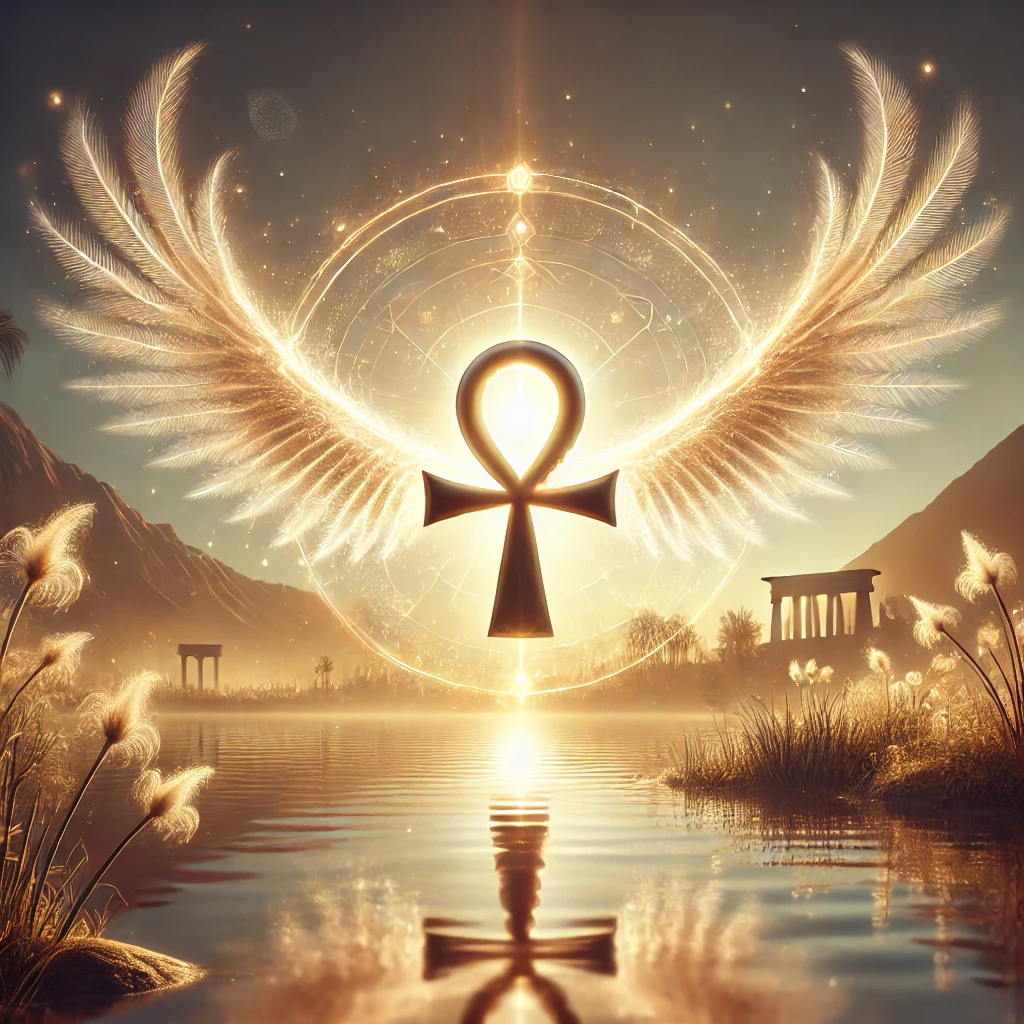Definition
Isis is one of the most powerful and venerated goddesses in ancient Egyptian mythology. She is known as the goddess of magic, healing, motherhood, protection, and rebirth. A figure of immense compassion and spiritual authority, Isis was revered not only in Egypt but across the Greco-Roman world and remains influential in modern spiritual traditions. She is associated with divine wisdom, sacred femininity, and the power to transcend life and death.
Mythological Role and Origins
Isis (Egyptian name: Aset or Eset) emerged during the Old Kingdom, but her worship became more widespread and significant in the New Kingdom and later periods, eventually spreading throughout the Mediterranean world.
Family and Lineage
- Daughter of: Geb (Earth) and Nut (Sky)
- Sister and Wife of: Osiris
- Mother of: Horus
- Sister of: Nephthys, Seth, and Osiris
Isis plays a central role in the Osirian myth, one of the most important Egyptian religious narratives. After her husband Osiris is killed and dismembered by his brother Seth, Isis searches for his body parts, reassembles him, and revives him through powerful magic. She then conceives Horus, raising him in secret to avenge his father and restore divine order.
This myth defines Isis as the archetypal divine mother, healer, and magical priestess.
Symbols and Iconography
- Throne Crown (Hieroglyph for “Isis”) – Symbolizes her role as the seat of the pharaoh’s authority and divine sovereignty.
- Ankh – Represents life and immortality.
- Sistrum – A sacred rattle associated with healing, ritual, and music.
- Cow Horns with Sun Disk – A crown similar to Hathor’s, linking Isis to motherhood and celestial energy.
- Wings – Spread to provide protection and resurrection, often seen shielding the dead.
She is depicted as:
- A beautiful woman wearing a throne crown or sun disk with horns
- Holding an ankh and papyrus staff
- Sometimes with outstretched wings embracing or protecting
- Occasionally depicted nursing the infant Horus, symbolizing divine motherhood
Roles and Powers
1. Goddess of Magic and Divine Wisdom
Isis was renowned for her magical prowess, capable of healing, resurrecting the dead, and invoking divine forces. She was the Mistress of Words of Power, able to command creation through sacred speech and incantation.
2. Protector and Healer
She guarded the sick, comforted the grieving, and healed the wounded. In the underworld, Isis used her powers to guide and protect souls during their transition to the afterlife.
3. Motherhood and Fertility
Isis is the divine mother, nurturing Horus and all creation. Her role as a caregiver extended to all who sought her protection—especially women, children, and the vulnerable.
4. Guide of the Dead and Patron of Rebirth
Isis assisted Osiris in his resurrection and became a protector of the dead, ensuring their safe passage into the afterlife. She is also associated with rituals of rebirth and spiritual transformation.
Temples and Worship
Temple of Isis at Philae
- One of the most significant and last-active temples in Egypt.
- Located on the island of Philae on the Nile.
- A major pilgrimage site for healing and devotion to Isis well into the Greco-Roman era.
Widespread Worship
- Isis’s cult spread beyond Egypt to Greece, Rome, and throughout the Mediterranean, where she was worshipped as a universal mother and savior goddess.
- The Isiac Mysteries, a set of secret initiation rites, celebrated Isis as a source of spiritual enlightenment and salvation.
Isis in Mythology and Ritual
- In the Osirian cycle, Isis performs rituals that form the basis for Egyptian funerary practices, including mourning songs, magical resurrection rites, and protective spells.
- In some versions of the Book of the Dead, Isis and Nephthys guard the deceased and offer magical assistance in the judgment process.
Spiritual Significance and Modern Interpretation
In contemporary spiritual and metaphysical traditions, Isis is seen as:
- A symbol of divine feminine power, intuition, and sacred transformation
- A guide in magical, healing, and priestess practices
- A mother figure representing unconditional love, compassion, and devotion
- An archetype for resilience, empowerment, and inner strength
She is often invoked in rituals involving healing, spiritual protection, feminine empowerment, grief, and rebirth.
Conclusion
Isis is the quintessential goddess of magic, healing, and divine love. Her myths reveal the power of sacred devotion, the strength of feminine wisdom, and the mystery of transformation. Whether as a nurturing mother, a resurrector of the dead, or a master of magic, Isis continues to be a guiding light for seekers of inner truth, healing, and spiritual rebirth.

